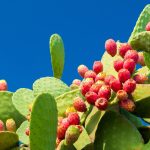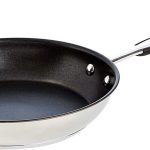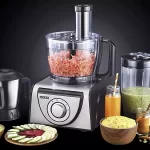How to Reheat Corn on the Cob? - The 5 Best Ways

Farmers start harvesting the corn in late summer or early fall and foodies start salivating around the same time, imagining all the yellow and gold goodness that is about to grace their plates.
There’s nothing like the experience of eating corn on the cob. Not even the kernels of corn are comparable. It’s the process of holding the ear in your hands and taking a big, juicy bite that makes eyes roll back in pure happiness. Yes, it’s a disaster. Yes, it gets caught in your teeth. No, you wouldn’t trade it for anything.
The problem is, corn on the cob is so delicious that if you’re anything like me, you think you’re going to eat way more than your body can physically handle in one sitting. So you end up with leftover cooked corn. If this is your case right now, don’t panic.
How do you reheat corn on the cob?
There are five ways to reheat corn on the cob: in the microwave, in boiling water, on the grill, and by baking it in the oven. All of these ways are reliable, but the best one depends on how you initially cooked the cob.
This article will walk you through several different techniques you can use to learn how to reheat corn on the cob.
How To Reheat Corn On The Cob - The 5 Best Ways
1. In the microwave
The microwave is the quickest and easiest solution for heating corn on the cob. Find a microwave-safe plate (I like this set on Amazon) that is large enough to place the corn inside of it, so that it lays flat on the plate.
Add about 1-2 tablespoons of water to the bottom of the dish and cover with a microwaveable plate or lid. This will allow the corn to steam rather than dry out. Program the microwave for 45 seconds and turn the corn. Put it back in for another 30 - 45 seconds, depending on the power of your microwave.
If you’re not convinced the corn is hot enough, you can pop it back in for 30 seconds each time. Due to the water, be careful when you remove the lid as a small cloud of steam will escape.
2. In boiling water
If you boiled the corn the first time you cooked it, you can re-boil it very quickly to heat it up again.
All you have to do is bring a large pot (like this one) of water to a boil, add the corn, and let it soak in the hot bath for 1-2 minutes max . It will take longer to bring the water to a boil than it will to heat the corn well, so don’t put it in and forget about it.
Another tip is that you never add salt to the water before boiling the corn, neither to cook it originally nor to reheat it. The salt actually dries out the beans a bit and robs them of some of the sweetness. The only thing you need is water. You can add salt and butter to the cooked corn, just before you bite into it.
3. On the grill
If you grilled your corn the first time you cooked it, you don’t want to boil it to reheat it. Instead, you can heat up the grill once more and reheat the corn this way. If you boiled the corn the first time, reheating it on the grill will subtly alter the flavor, giving you a whole new experience to enjoy.
You can use a pastry brush to lightly coat the corn with a little oil to bring out the flavors.
Again, cooked corn doesn’t take long to heat up, so keep an eye on it. For best results, you’ll want to turn the corn every 30 seconds until it’s well-heated all over. This usually takes 2 full rotations per ear of corn.
4. Baked in the oven
This is the most time-consuming way to heat up your precooked ears of corn, but if you’re an oven enthusiast, or if you’re reheating your ears in the winter and just want an excuse to stand next to a nice hot oven, this It will be a great solution for you.
You have several options for using your oven.
You can find a bowl large enough to place the corn in, and add some water to the bottom of the bowl. Cover it with aluminum foil and put it in an oven heated to 400 F. It will take about 5 minutes to cook through in your oven.
5. Roast in the oven
You can also use the broil setting to toast the corn. Place a cooling tray inside a baking tray, then place the corn on top of the tray.
Put everything in the oven, at least 15 cm from the heat source.
After 1 minute, rotate the corn 45 degrees. Repeat the process until the corn is completely toasted. It may take 2 full rotations for it to fully heat up, but you have to judge for yourself.
How to buy and store corn on the cob
Before you reheat corn on the cob, you need to choose the best fresh corn you can find and cook it first.
To choose corn on the cob, look for bright green colors with no dry bits on the husks. Examine each ear carefully for small wormholes and remove them unless you are looking for extra protein with your corn.
Without peeling the skin, run your fingers through the silk at the top. They should feel soft and very slightly moist. Lastly, squeeze the corn to make sure it is firm, and not mushy or mushy, and completely filled to the top with kernels.
Refrigerate corn on the cob
If you have fresh ears of corn or leftover cooked corn that you plan to reheat soon, you should make sure that you store them properly in the fridge to keep them fresh.
Make sure the corn is cool to room temperature before refrigerating it, but don’t forget it on the counter. Bacteria love the sugar in corn, so make sure you put it in the fridge within 2 hours of cooking.
The two best ways to store corn cobs are as follows
- Individually wrap each ear in aluminum foil or plastic wrap, making sure they are well protected from exposure to air
- Putting the ears of corn in a Ziploc bag and removing as much air as possible before sealing. You can keep multiple ears in each bag, but it helps to arrange them in a zig-zag pattern, so the top and bottom turn over with each ear. Make sure they don’t pile up, just lay flat, and that the bag isn’t so full that it doesn’t seal well.
Properly stored cooked corn will stay fresh in the fridge for 3 to 5 days.
Freeze corn on the cob
Corn is harvested at the same time, which means farmers markets and grocery stores are going to be inundated with fresh corn at a certain time of year, and then in a month or so it’s back to canned corn. or frozen for most of your cooking.
If you enjoy eating corn on the cob, one of the best ways to enjoy it year-round is to buy in bulk while it’s fresh and freeze most of it for year-round consumption.
fresh corn on the cob
The quickest and easiest way to freeze fresh corn on the cob is to leave it in the husk, if you bought it that way, because the natural covering will better protect the corn from the formation of ice crystals.
If it’s already been shelled, that’s fine, but it may not stay fresh in the freezer for as long. It is an incredibly easy food to freeze.
Just put it in a freezer-safe Ziploc brand bag, squeeze as much air out of the bag as possible, seal it, and freeze it. You can put more than one ear in the bag, you just have to make sure that each one is flat and that the closure is perfectly airtight.
Before you put the sealed bag in the freezer, it’s a good idea to date it so you know when it went in. If it’s frozen in the shell it will last up to 1 year, but if it’s shelled you’ll want to consume it within 6-8 months if possible.
Cooked corn on the cob
If you’ve already cooked the corn on the cob and later found that you or your family didn’t eat as much as you thought, you can freeze the cooked corn . However, if you leave it on the cob, it won’t retain its quality very well. It is best to cut the beans before freezing.
When you have the kernels separated from the cob, spread them out in a single layer on a parchment paper-lined baking sheet. Freeze them like this for 30 minutes - 1 hour to freeze as individual grains. At this point, you can transfer the beans to a freezer-safe Ziploc bag. Be sure to get as much air out of the bag as possible and date the bag so you know when they were frozen.
As long as they are tightly closed, the corn kernels will stay fresh in your freezer for up to 1 year. Once the corn is thawed, it will stay fresh in your fridge for up to 3 days.
Related questions
How long does it take to boil an ear of corn?
If you have purchased pre-cooked corn, you can add the corn to a pot of unsalted water that is already boiling. Fresh corn will only take a few minutes to cook, so check after about 3 minutes, but if you have a large ear of corn or many in the pot, it can take longer than 5 minutes.
If your corn is a bit older, letting it cook for another minute or two will soften it up and make it easier and more flavorful to eat. If you have purchased corn with the husks, you can cook it with the husks by adding an additional 3-5 minutes to the cooking time (see below for more information).
Is Corn On The Cob Good For You?
As with almost all foods, eating corn on the cob has advantages and disadvantages. It’s a hearty vegetable, packed with fiber and many different vitamins and minerals, though it’s rather low in protein or healthy fats.
The wide variety of vitamins and antioxidants in corn have been shown to help keep your eyes in good shape, improve digestion and even protect against certain types of cancer. So yes, corn on the cob can be very good for you.
Corn has two main disadvantages:
- It’s quite starchy, which means it will easily turn into glucose and can spike your blood sugar levels. This is something to keep in mind if you are diabetic or insulin resistant. However, due to its high fiber content, it is better balanced than, for example, eating a chocolate bar.
- Corn is one of the most genetically modified crops produced today. Research on GMO crops and genetically modified crops is highly controversial, ranging from “it won’t do anything to harm your health” to “it’ll kill you for sure.” If you can find organic corn, this handicap disappears, and this would be a good food to hedge your bets on if possible.
It is also important to mention that corn on the cob has many nutritional benefits, but corn-based products do not. In fact, most corn-based products are definitely bad for you.
Can you cook corn on the cob with the husk on?
You can absolutely cook corn on the cob while it’s in the husk, and it’s actually much easier than trying to husk the corn before cooking.
Shelled corn can often be purchased for less because there is more work to do, but if you boil, roast, or even microwave the corn with the husk on, the husk will come off easily and cleanly once cooked with little to no fuss.
All you have to do is add another 3-5 minutes to the cooking time. Once cooked, cut off the bottom and shell and all the silk threads will slide off in one piece.
Is sweet corn the same as corn on the cob?
All sweet corn grows on the cob, but not all corn on the cob is sweet corn. Sweet corn can also be found in grain, frozen, or canned. If you eat corn that looks like corn, it’s most likely sweet corn.
However, if you’re eating a product made from corn, it’s probably made from field corn. Field corn can also be purchased as corn on the cob, but it’s not as nice, so you’re not likely to see it sold as such. Field corn is harvested when it is older, drier, and much less sweet, so it is more common for it to be processed into cornmeal, cornmeal, or used to make chips or flakes.
What is the process of removing corn from the cob called?
The process by which corn kernels are removed from the cob is called shelling or shelling. The result is that you get corn kernels or some call them niblets, depending on where you are from.
Niblets is actually a trademarked name for Green Giant, but it has become something of an eponym in North America, similar to Kleenex in reference to tissues.











